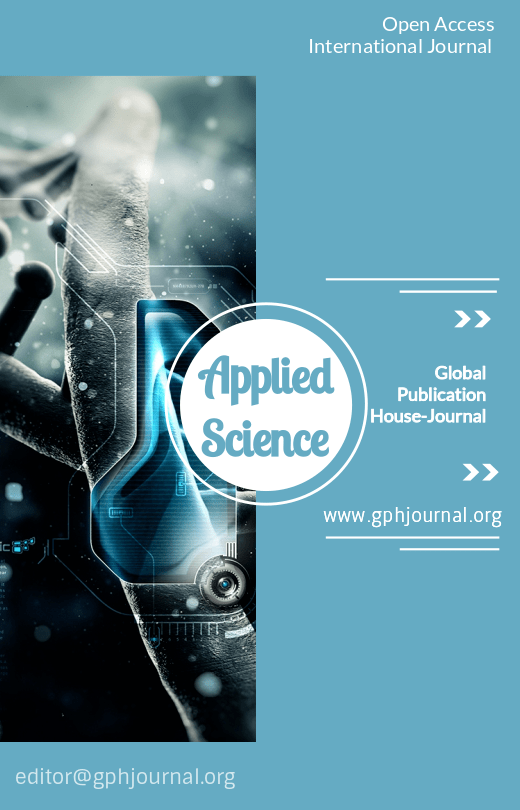SOIL EROSION ESTIMATION USING REMOTE SENSING TECHNIQUES IN THESHIRVAN PLAIN OF THE REPUBLIC OF AZERBAIJAN
Abstract
Soil erosion is one of the major environmental problems in terms of soil degradation in the Shirvan plain of the Republic of Azerbaijan. Soil erosion leads to significant on- and off-site impacts such as significant decrease in the productive capacity of the land and sedimentation. The key aspects influencing the quantity of soil erosion mainly rely on the vegetation cover, topography, soil type, and climate. This research studies the quantification of soil erosion under different levels of data availability in the Shirvan plain. Remote Sensing (RS) and Geographic Information Systems (GIS) techniques have been implemented for the assessment of the data, applying the Revised Universal Soil Loss Equation (RUSLE) for the calculation of the risk of erosion.Thirty soil samples were randomly selected for the calculation of the erodibility factor, based on calculating the
Downloads
References
[2].A.N. Isayev Influence of groundwater on geochemical influence of Shirvan plain agro-landscapes. Works of the Azerbaijan Geographical Society.p. 41. Baku. 2016.
[3].M.A. Museyibov Physical geography of Azerbaijan Education p. 81. Bakı-1998
[4].В.Ф. Вальков, К.Ш. Казеев, С.И. Колесников ЭКОЛОГИЯ ПОЧВ Ct.54. Ростов-на-Дону 2004.
[5].P. M. Driesen, “Erosion hazards and conservation needs as a function of land characteristics and land qualities,” in Land Evaluation for Land-Use Planning and Conservation in Sloping Areas, W. Siderius, Ed., pp. 32–39, ILRI, Wageningen, The Netherlands,1986.
[6] C.Valentin, J.Poesen,andY.Li,“Gullyerosion: impacts,factorsandcontrol,”Catena, vol.63, no. 2-3,pp.132–153,2005.
[7-8].J. Wainwright, A. J. Parsons, and A. D. Abrahams, “Plot-scale studies of vegetation, overland flow and erosion interactions: case studies from Arizona and New Mexico,” Hydrological Processes,vol.14,no.16-17,pp.2921–2943,2000.
[8].M.KumarHazarika,K.Honda“Estimates of soil erosion using Remote and GİS,İts valuation and Economic İmplications on Agrocultral production. 2, pp. 3-4, 2001.
[9].E. G. Gregorich, K. J. Greer, D. W. Anderson, and B. C. Liang, “Carbon distribution and losses:erosion and deposition effects,” Soil Tillage Research,vol.47,no.3-4,pp.291–302,1998.
[10].C.J.Williams,F.B.Pierson,P.R.Robichaud,andJ.Boll, “Hydrologic and erosion responses to wildfire along the rangeland– xeric forest continuumin the western US: are view and model of hydrologic vulnerability,”International Journal of Wildland Fire, vol.23,no.2,pp.155–172,2014.
[11].M.V.K.Sivakumar,“Interactions between climate and desertification,”Agricultural and Forest Meteorology,vol.142,no.2-4, pp.143–155,2007.
[12].I. Z. Gitas, K. Douros, C. Minakou, G. N. Silleos, and C. G. Karydas, “Multi-temporal soil erosion risk assessment in N. Chalkidiki using a modified USLE raster model,” EARSeL Proceedings,vol.8,no.1,pp.40–52,2009.
[13].P.Podwojewski,J.L.Janeau,S.Grellier,C.Valentin,S.Lorentz, and V. Chaplot, “Influence of grass soil cover on water runoff and soil detachment under rainfall simulation in asub-humid South African degrade drangeland,”Earth Surface Processesand Landforms,vol.36,no.7,pp.911–922,2011.
[14] S. Grellier, J. Kemp, J.-L.Janeau et al., “The indirect impact of encroachingtreesongullyextension: year studyinasubhumid grassland of South Africa,” Catena, vol. 98, pp. 110–119, 2012.
[15].W.H.WischmeierandD.D.Smith,“Predicting rainfall erosion losses from crop landeastof the Rocky Mountains,”Agricultural Handbook 28,US Government Printoffice,Washington,DC, USA,1978.
[16].R.P.Williams,“Erosion and sediment transportin the Owens Rivernear Bishop,California,”Water-Resources Investigations Report75-49,U.S.Geological Survey Water Resources Investigations,1975.
[17]K.Renard,G.R.Foster,G.A.Weesies,andJ.P.Porter,“RUSLE revised universal soil loss equation,” Journal of Soil and Water Conservation,vol.46,pp.30–33,1991.
[18].E.Bochet and P.Garcıa-Fayos, “Factors controlling vegetation establishment and water erosion onmotor wayslopesinValencia,Spain,”RestorationEcology,vol.12,no.2,pp166–174,2004.
[19-15].V. H. D. Zuazo and C. R. R. Pleguezuelo, “Soil-erosion and runoff prevention by plant covers review,” Agronomy for Sustainable Development,vol.28,no.1,pp.65–86,2008.
[20]V. H. D. Zuazo, J. R. F. Martınez, C. R. R. Pleguezuelo, A. M. Raya,andB.C.Rodrıguez,“Soil-erosion and runoff prevention by plant cover sinamountainousarea(SESpain):implications for sustainable agriculture,”Environmentalist,vol.26,no.4,pp. 309–319,2006.
[21] A. Psilovikos and M. Elhag, “Forecasting of remotely sensed daily evapo transpiration data over nile Delta region,Egypt,”Water Resources Management, vol. 27, no12,pp.4115–4130, 2013.
[22] V. M. Castillo, M. Martinez-Mena, and J. Albaladejo, “Runoff and soil loss response to vegetation removal in a semiarid environment,” Soil Science Society of America Journal, vol. 61, no.4, pp.1116–1121,1997.
[23] V. H. Duran Zuazo, J. R. F. Martınez, C. R. R. Pleguezuelo, A. Martınez Raya, and B. C. Rodrıguez, “Soil-erosion and runoff prevention by plant covers in a mountainous area (SE Spain): implications for sustainable agriculture,”Environmentalist,vol. 26,no.4,pp.309–319,2006.
[24]USDA. Agricultural Research Service USDA-ARS, “CREAMS, afieldscalemodel for chemicals,runoff,and erosion from agricultural management systems,” Conservation Research Report 26,USDA,1980.
[25]B.J.Barfield,R.C.Warner,andC.T.Haan, Applied Hydrology and Sedimentology for Disturbed Areas, Oklahoma Technical Press,Stillwater,Okla,USA,1983.
[26] G. R. Renard, G. A. Foster, and D. K. Weessies, “McCool predicting soilerosion by water:aguideto conservation planning with the Revised Universal Soil Loss Equation (RUSLE),” in Agriculture Handbook,D.C.Yoder,Ed.,p.703,US Department of Agriculture, Washington, DC,USA,1997.
[27]J.P.Wilson and J.C.Gallant,Terrain Analysis-Principles and Application,John Wiley Sons,NewYork, NY,USA,2000.
[28]W.Drzewiecki, P.Wezyk, M. Pierzchalski, and B. Szafra´nska, “Quantitative and qualitative assessment of soil erosion riskinMałopolska(Poland),supportedbyanobject-based analysis of high-resolution satellite images,” Pure and Applied Geophysics, vol.171,no.6,pp.867–895,2014.
[29] I.D.MooreandG.J.Burch,“Physical basis of the length-slope factorin the universal soil lossequation,”Soil Science Societyof AmericaтJournal,vol.50,no.5,pp.1294–1298,1986.
[30]I.D.MooreandG.J.Burch,“Modellingerosionanddeposition:topographic effects,”Transactions of the American Society of AgricultureEngineers,vol.29,no.6,pp.1624–1630,1986.
[31].M. Elhag, “Remotely sensed vegetation indices and spatial decision support system for better water consumption regime in Nile Delta.Acase study for ricecultivation suitability map,” Life Science Journal,vol.11,no.1,pp.201–209,2014.
[32].M.Elhag, “Characterization of a typical mediterranean watershed using remote sensing techniques and GIS tools,” Hydrology:Current Research,vol.6,no.1,pp.197–204,2015.
Copyright (c) 2023 GPH-International Journal of Applied Science

This work is licensed under a Creative Commons Attribution-NonCommercial-NoDerivatives 4.0 International License.
Author(s) and co-author(s) jointly and severally represent and warrant that the Article is original with the author(s) and does not infringe any copyright or violate any other right of any third parties, and that the Article has not been published elsewhere. Author(s) agree to the terms that the GPH Journal will have the full right to remove the published article on any misconduct found in the published article.























